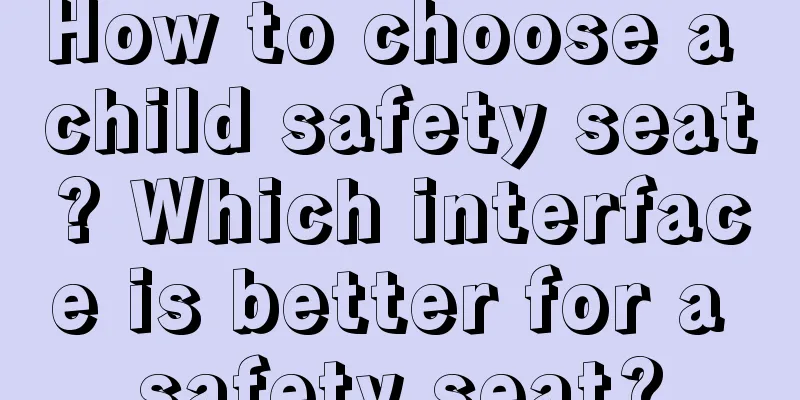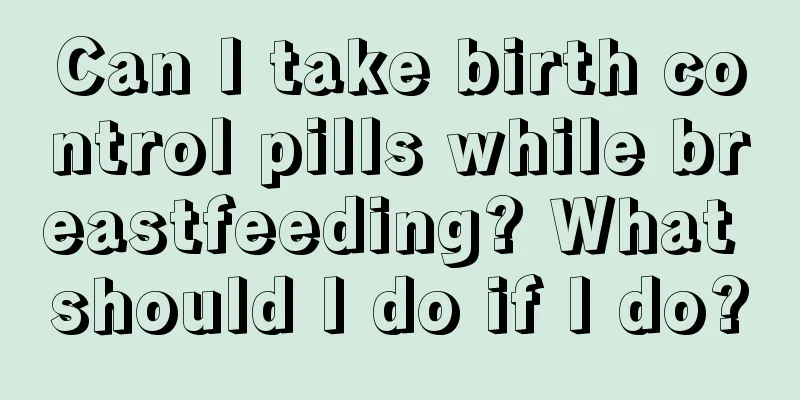How to choose a child safety seat? Which interface is better for a safety seat?

|
Child safety seats are a safety protection for babies when traveling, so parents should choose suitable and durable safety seats to ensure the safety of their babies. So how should we choose among so many child safety seat brands? Which interface is better for safety seats? Let's learn about it together~ Child Safety Seat Buying GuideFirst, choose according to the specific age and weight of the child. Children under one year old and weighing less than 10 kg should choose a cradle-type rear-facing safety seat; children aged one to three years old weighing 10-20 kg should choose a fully covered safety seat; children aged three to ten years old weighing 15 to 36 kg should choose an enclosed safety seat. Second, the material of the safety seat. High-quality safety seats are made of solid materials and sophisticated workmanship. The backrest is mainly made of EPS material, not foam material, which has good shock resistance. The inner layer of the seat fabric is preferably polyester fiber cotton that has been flame-retardant treated. Third, the safety seat fixing method. Currently, there are three ways to fix safety seats: European standard ISOFIX, American standard LATCH and seat belt fixing method. Although these three fixing methods are all safe, the seat belt fixing method is more complicated and may increase the risk. Fourth, the safety seat should match the vehicle model. Before purchasing, you need to understand what type of mounting system the vehicle uses, as well as the number and location of anchor points in the vehicle. The child safety seat you buy should match the mounting system in the vehicle. Expert advice: Through observation of many users' children, we know that the size of the child safety seat and the child's reminder are the most important issues we should consider when purchasing a child safety seat. We must not deliberately purchase a larger child safety seat product because the safety seat is too tight and the child is uncomfortable. Perhaps a small negligence on our part may lead to an irreversible disaster. Secondly, child safety seats are not static. We must also adjust and re-purchase new child safety seats in a timely manner according to the child's development. What type of safety seat should be used for different age groups?1. Suitable for babies from newborn to 15 months old (or babies weighing between 2.2 kg and 13 kg) A cradle-style safety seat is suitable for babies from newborn to 15 months old. This type of child safety seat is generally equipped with a rocking bottom and a handle that can be used as a carrycot. 2. Suitable for babies from newborn to 4 years old (or babies weighing between 2.2 kg and 18 kg) The reversible safety seat is designed to provide two functions at the same time: first for newborns to 9-month-old babies, and then for babies from 9 months to 4 years old. Although this seat does not have the function of rocking, portability, and stroller compatibility, it can be fixed in the car and used for a long time. If you want to save some money, this is a good choice. In addition, special attention should be paid when using this type of seat. Babies from newborns to 9 months old need to install the seat in reverse direction, and babies from 9 months to 4 years old need to install the seat in forward direction. However, there are two necessary conditions for forward installation: first, the baby's weight is over 9 kilograms; second, the baby can sit up by himself. Both are indispensable. 3. Suitable for children aged 1 to 12 years old (or babies weighing between 9 kg and 36 kg) A combination safety seat is an interesting combination product that is both a seat for toddlers (ages 1 to 4 years) and a seat that can be removed and used directly with adult seat belts up to 12 years old. You don't need to change the other car seat cushions. The downside of this product is that the size difference between a 1-year-old and a 12-year-old is quite large, so it will not be very comfortable for the younger baby. 4. Suitable for children aged 3 to 12 years old (or babies weighing between 15 kg and 36 kg) The difference between the car seat and the category 3 car seat cushion is that the 3-12 year old car seat has more side and head protection than the car seat cushion. The height of the headrest is adjusted with the height of the baby and can be used up to a height of 145 cm. There are guide holes for the seat belt on the side of the headrest to ensure that the seat belt is away from the neck. 5. Suitable for children aged 3 to 12 years old (or babies weighing between 15 kg and 36 kg) Car seat cushions are indispensable. After the baby reaches 4 years old, many parents think that the baby can no longer use car seat cushions. However, research results show that the baby's body is too small, even if an adult seat belt is used, it is still very dangerous if an accident occurs. Car seat cushions are usually not expensive, so it is best not to save on them. Which child safety seat interface is better?The emergence of child safety seats has brought good news to many of our parents and ensured the safety of children to a certain extent. What are the child safety seat interfaces? Let's learn about them through the following child safety seat interface content! European standard ISO FIX fixing method for child safety seat interface ISO FIX (International Standards Organization FIX) child safety seat fixing system is a standard for child safety seat interfaces designed and implemented in Europe since 1990. Currently, all models sold in Europe have this interface as a standard configuration, and some joint venture car manufacturers in China also provide this interface configuration. The feature of this configuration is that it has two fixed interfaces that are hard-linked to the child seat. As long as we see the obvious ISO FIX mark on the rear seat, we can clearly understand that the rear child seat adopts the European standard. The advantage of ISO FIX is that it is very easy to install, the error rate of installation is very low, and the safety factor is relatively high; the disadvantage is that it is more expensive, and the condition is that your car must have two ISO FIX interfaces. Most consumers may not know whether their car has such an interface. At present, new car models after 2012 generally have ISO FIX. If you still don’t know whether your car model has ISO FIX, you can search on Baidu. Just enter "model year + model name + parameters" and find the parameter table of the relevant model to see whether the model has an ISOFIX interface. Child safety seat interface - seat belt fixing method This child safety seat is fixed by using the three-point seat belt on the car, so it can be used in any car with three-point seat belts in the world. The advantages of seat belt installation are that it is versatile and suitable for all vehicles, and the price is relatively cheap; the disadvantage is that the safety is relatively complicated, but in fact it is very simple if consumers know how to install it. Child safety seat interface - American standard LATCH fixing method LATCH (full name is Lower Anchors and Tethers for CHildren) has been required in the United States since September 1, 2002 to provide a child safety seat fixing method of the LATCH system in almost all types of cars. The biggest difference between it and the European standard ISO FIX fixing method is that the connection method is not a hard link but a soft connection in the form of a hook, and there is one more fixing point than ISO FIX, for a total of three. LATCH fixing method, LATCH is generally an American standard system. This fixing method not only requires two interfaces on the car that are the same as ISO FIX, but also requires an interface under the windshield behind the rear seats. Child safety seat interface: three ways to fix it from the perspective of safety As long as they have strictly passed the corresponding standard test, they are safe. If we must make a distinction, the ISOFIX fixing method has the highest safety factor, followed by the LATCH fixing method, and then the three-point seat belt fixing method. This is a bit like a student exam, 60 points is the passing line, and all those that have passed the European standard test are above 90 points, ISOFIX is above 95 points, LATCH is 90-95 points, and the seat belt is 90 points. |
<<: Are antipyretics harmful to the kidneys? Side effects of antipyretics on children
>>: Symptoms of ADHD in children. What should I do if my child is hyperactive?
Recommend
Will Dettol disinfectant discolor clothes? How to use Dettol disinfectant to wash clothes?
The application range of Dettol disinfectant is v...
What is the shelf life of the Pigeon Mosquito Repellent Patch? How long can the Pigeon Mosquito Repellent Patch be stored?
Products like mosquito repellent patches have a s...
Will babies become smarter the more they crawl? What are the benefits of babies crawling?
As the saying goes, "sit at seven, crawl at ...
When to use a belly belt for a pregnant woman? Is it different for a vaginal birth or a cesarean section?
If it is a cesarean section, it can only be used ...
What should I do if my baby refuses to brush his teeth and cries when I brush them? How can I help my baby develop the habit of brushing his teeth?
Babies refusing to brush their teeth is a headach...
What are the common diseases of babies in summer? Introduction to common diseases of babies in summer
What are the common diseases of babies in summer?...
How many times a day is normal for a newborn baby to poop?
The baby will gradually excrete meconium in the f...
How to effectively treat eczema? Treating both internal and external factors is the key
Eczema is a very common symptom in babies. It is ...
Can alcohol wipes be used to wipe the face? Can alcohol wipes be used to wipe wounds?
Alcohol wipes are a type of wet wipes that are co...
Which department should children with bronchitis go to? A guide to seeing a doctor for bronchitis in children
When children with bronchitis register in the hos...
Can pregnant women eat oil oranges? How to eat oil oranges
The oil orange is a green fruit. Although it can ...
Is Mama One Choice owned by Dettol? How many series does Mama One Choice have?
The brand Mama Yixuan seems to have only been lau...
How to avoid miscarriage during pregnancy How to have safe sex during pregnancy
The issue that many expectant fathers and mothers...
You will understand why breastfeeding is advocated after reading this
There is a scientific basis for promoting breastf...
Which brand of milk bottle is good? Which brand of milk bottle is the best?
Many parents prepare milk bottles before their ba...









